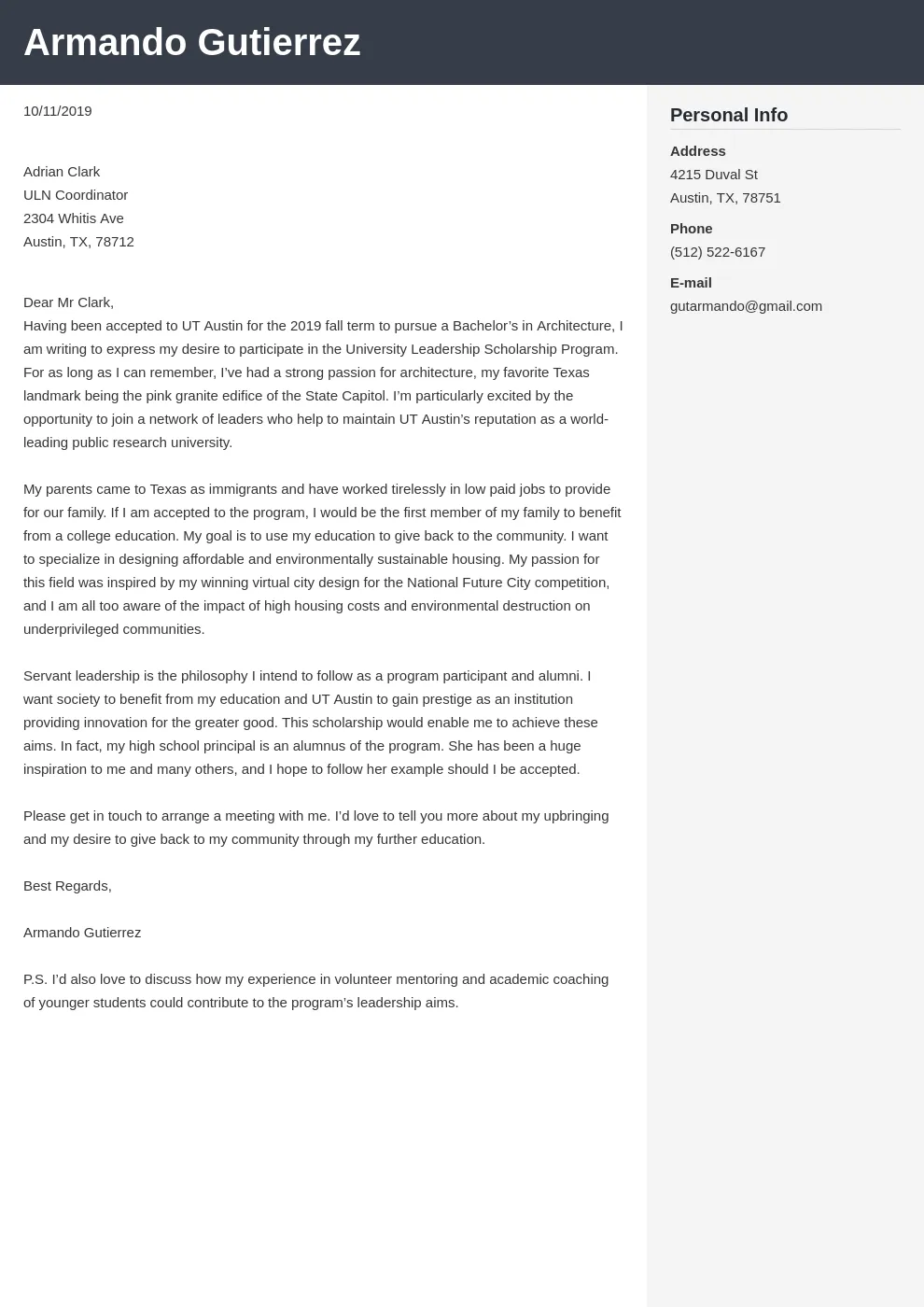What is a Scholarship Cover Letter
A scholarship cover letter is a formal document that accompanies your scholarship application. It serves as your introduction to the scholarship committee and provides an opportunity to showcase your qualifications, aspirations, and reasons for needing the scholarship. It’s more than just a formality; it’s your chance to make a strong first impression and persuade the selection committee that you are the ideal candidate. A well-written cover letter can significantly increase your chances of receiving a scholarship, making it an essential part of your application process. This guide will walk you through the critical elements and provide valuable insights to help you create a compelling cover letter.
The Purpose of a Scholarship Cover Letter
The primary purpose of a scholarship cover letter is to introduce yourself to the scholarship committee and highlight why you are a worthy recipient. It allows you to provide context to your application, explain your motivations, and demonstrate how the scholarship will help you achieve your academic and personal goals. The cover letter complements the other application materials, such as transcripts, test scores, and essays, by offering a more personal and nuanced perspective. It gives you the space to explain your unique circumstances, share your story, and show the committee that you are more than just a set of numbers and grades. Effectively, the cover letter is your voice, communicating your passion, commitment, and need for the scholarship.
Key Components of a Scholarship Cover Letter
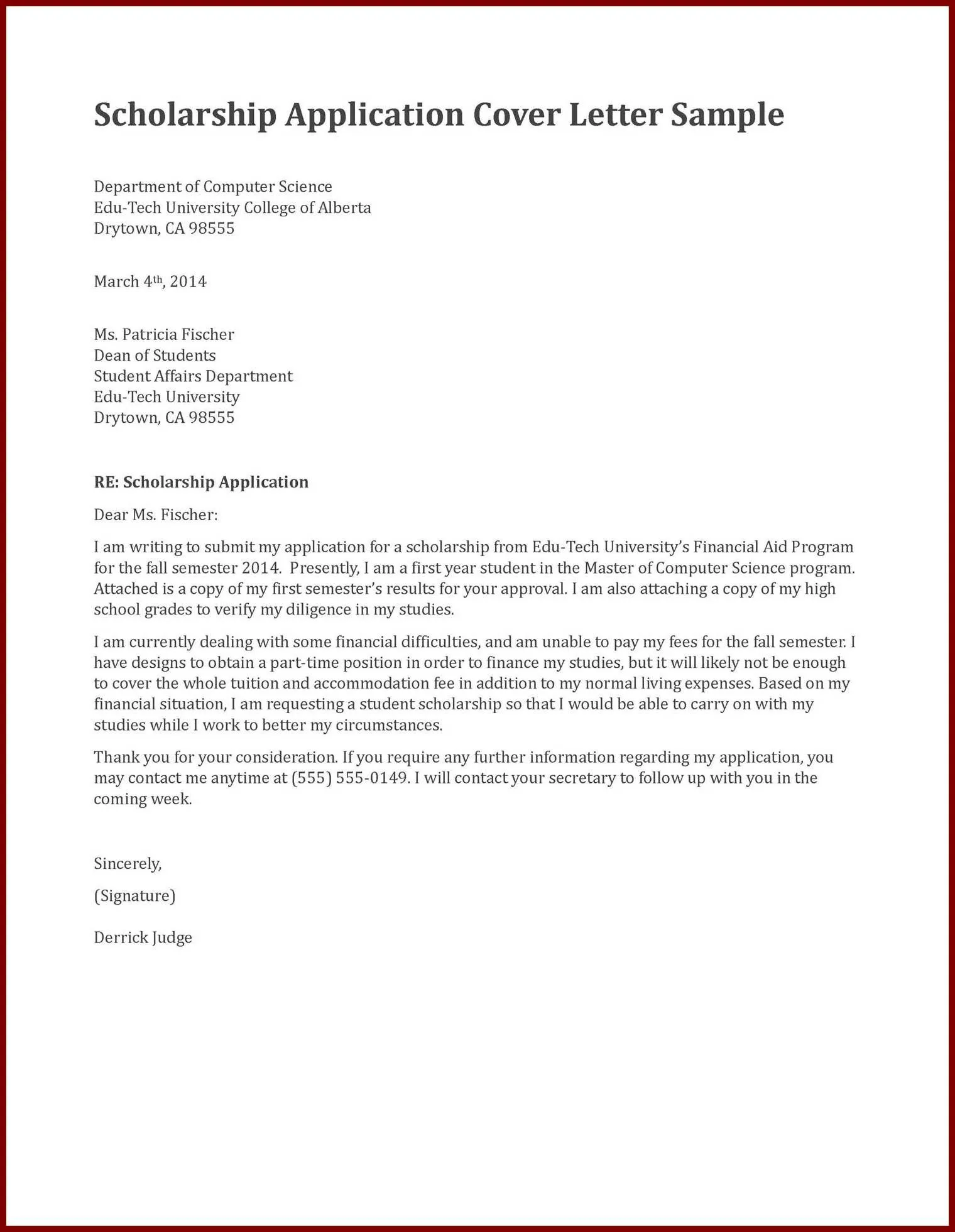
A compelling scholarship cover letter includes several essential components that work together to present a complete picture of your candidacy. Each section contributes to the overall impact of your letter, making it critical to address each element thoughtfully and accurately. Proper structuring ensures that your key points are clear, concise, and easy for the committee to understand. This structured approach helps you organize your thoughts and effectively convey your qualifications and aspirations, increasing your chances of success.
Your Contact Information
At the top of your letter, include your full name, address, phone number, and email address. This information allows the scholarship committee to easily contact you if they have any questions or to notify you of their decision. Ensure that your contact information is accurate and up-to-date. Use a professional-sounding email address; avoid using nicknames or informal language. Accuracy and professionalism in this section set the tone for the rest of your letter and demonstrate your attention to detail.
The Scholarship Provider’s Information
Include the name of the scholarship provider, the scholarship name, and the date. If you know the name of a specific contact person at the scholarship organization, address the letter to that person. This personalization demonstrates that you have researched the scholarship and shows respect for the committee. If you cannot find a specific name, use a general salutation such as “Dear Scholarship Committee.” Double-check the scholarship’s guidelines to ensure you include all required information and address the letter appropriately. This attention to detail reflects your seriousness about the application.
A Strong Opening Statement
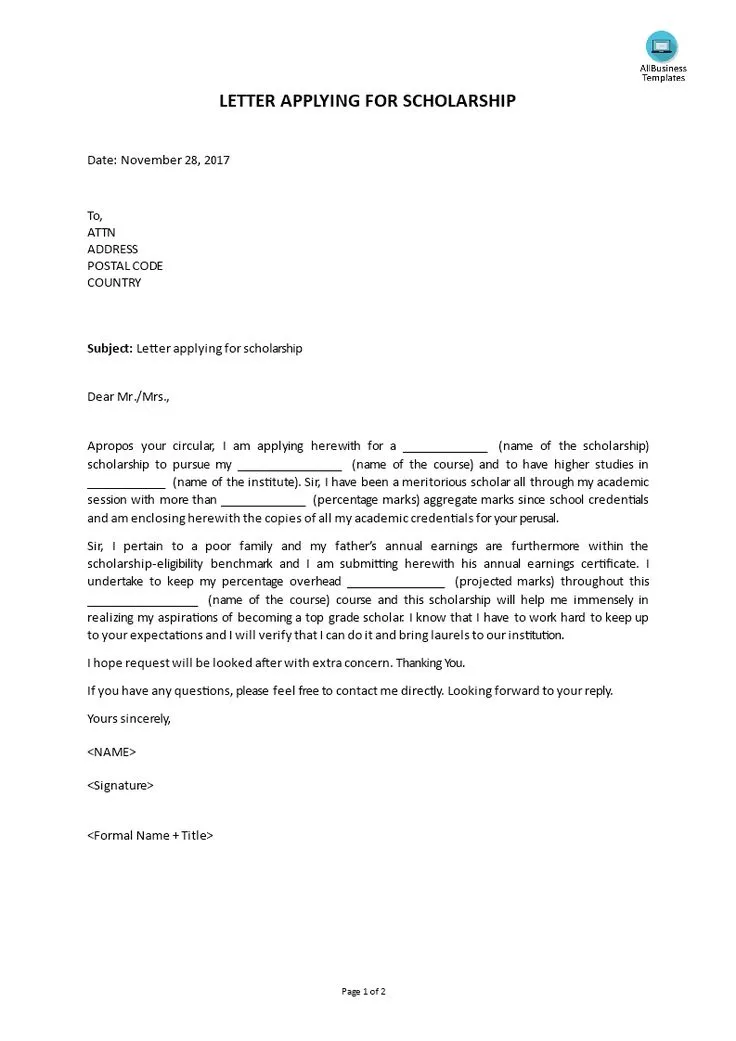
Your opening statement is your first opportunity to grab the reader’s attention. Start with a brief, compelling introduction that clearly states your purpose for writing: to apply for the scholarship. Briefly mention the scholarship name and how you learned about it. Use a confident and enthusiastic tone to convey your interest and suitability for the scholarship. Avoid generic phrases; instead, tailor your opening to the specific scholarship and your unique circumstances. This approach immediately engages the reader and sets a positive tone for the rest of your letter. Making a strong first impression is crucial.
Highlighting Your Qualifications
This section is where you showcase your qualifications and explain why you are a good fit for the scholarship. Focus on the aspects of your background that align with the scholarship’s criteria and the goals of the provider. Provide specific examples and evidence to support your claims. If the scholarship emphasizes academic excellence, highlight your GPA, relevant coursework, and any academic awards or honors. If community involvement is important, describe your volunteer activities and the impact you’ve made. Tailor this section to reflect the scholarship’s specific requirements and what the selection committee values most. This alignment is essential to make a persuasive case.
Academic Achievements
Detail your academic accomplishments, such as your GPA, class rank, and any honors or awards you’ve received. Mention relevant coursework or projects that demonstrate your interest in your field of study. Provide specific examples of your academic success to show your dedication and capabilities. If you have overcome any academic challenges, briefly explain them and how you have worked to improve. This part of your cover letter should be a clear, concise presentation of your academic credentials, emphasizing their relevance to your scholarship application.
Extracurricular Activities and Community Involvement
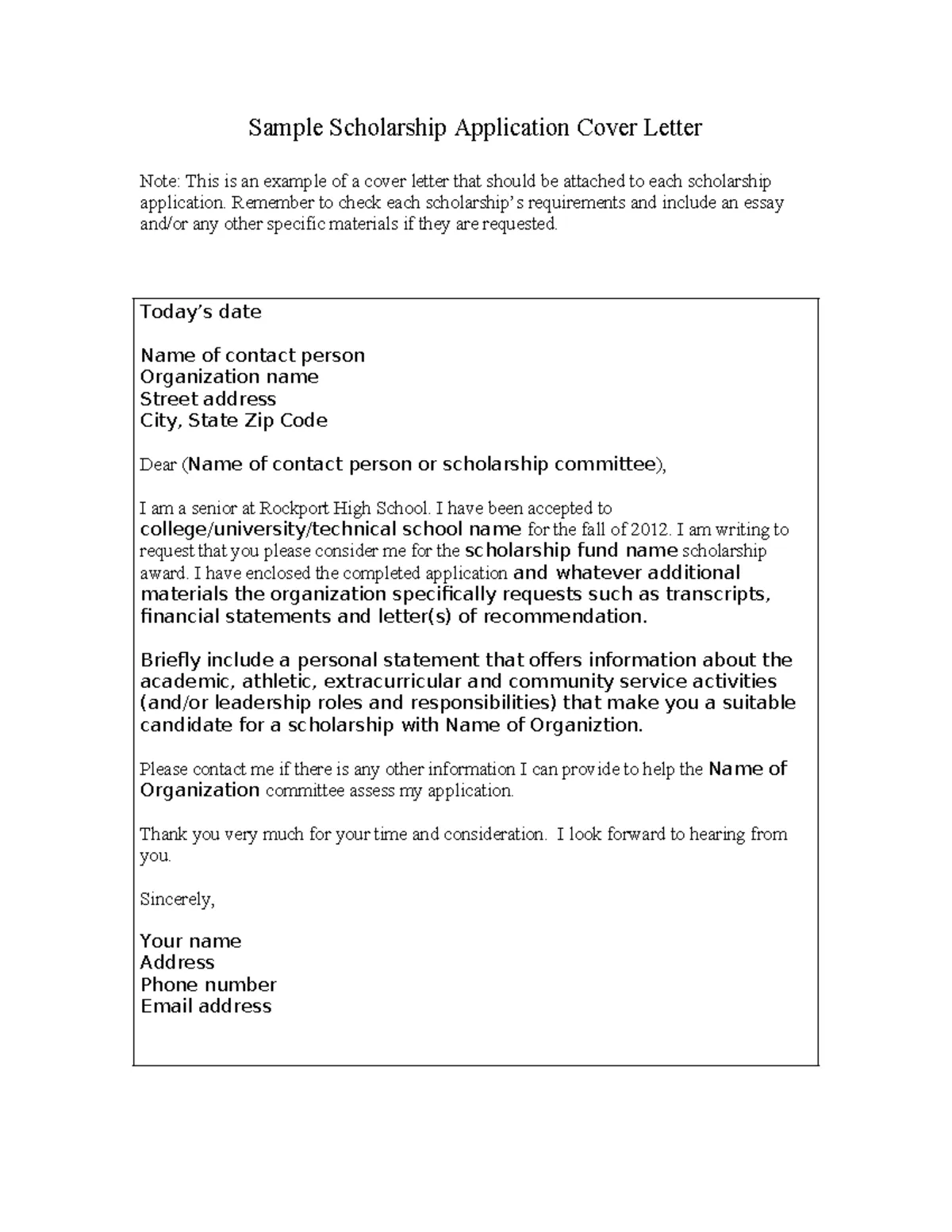
Describe your involvement in extracurricular activities, such as clubs, sports, and other organizations. Highlight any leadership roles you’ve held and the skills you’ve developed. Explain your volunteer experiences and the impact of your service. Mention any awards or recognition you’ve received for your involvement. Emphasize how these activities have contributed to your personal and professional development and showcase your ability to balance responsibilities. The goal is to show you’re well-rounded and contribute positively to your community.
Financial Need
If the scholarship considers financial need, provide a brief but honest explanation of your financial situation. Explain how the scholarship will help you afford your education and achieve your academic goals. Avoid going into excessive detail, but offer enough information to demonstrate your need without being overly emotional. Mention any financial challenges you face and how the scholarship will alleviate those burdens. This part is about showing the impact of the scholarship on your educational journey and future prospects. Financial need is often a significant factor, so presenting this clearly and concisely is critical.
Why You Deserve the Scholarship
This is the heart of your cover letter. Clearly articulate why you are a deserving candidate. Connect your qualifications, experiences, and goals with the scholarship’s mission and values. Explain how the scholarship will help you achieve your educational and career aspirations. Provide a compelling narrative that showcases your passion, determination, and commitment to excellence. Tell the committee what you plan to achieve and how the scholarship will facilitate this. This section allows you to make a strong case for your candidacy, making the selection committee understand the value you bring to the scholarship.
Expressing Gratitude and Closing
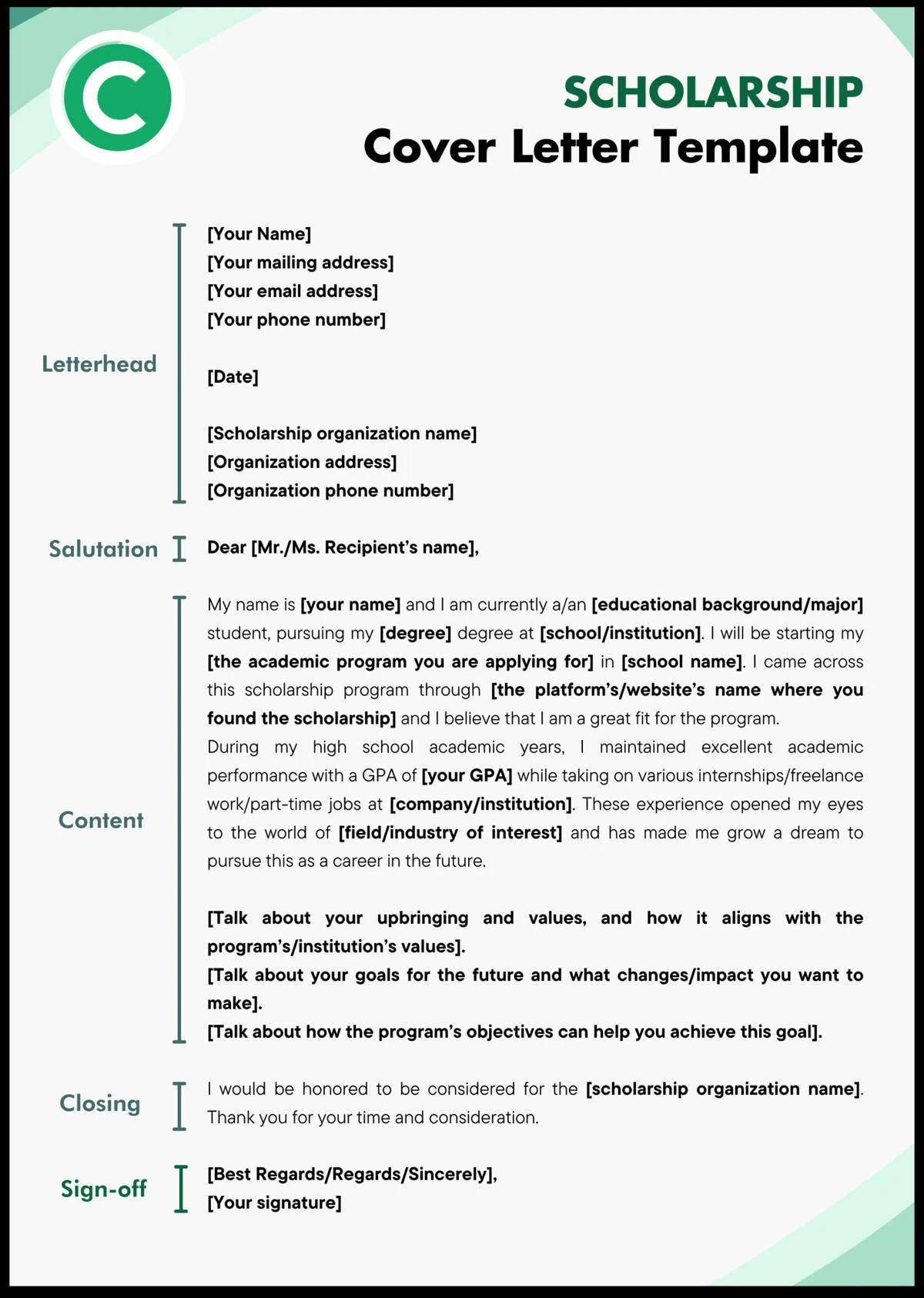
Conclude your letter by expressing your gratitude to the scholarship committee for their consideration. Reiterate your interest in the scholarship and your commitment to using the opportunity to the fullest. Thank them for their time and attention. Use a professional closing, such as “Sincerely,” or “Respectfully,” followed by your typed name. End with a professional tone that reflects your appreciation and eagerness. A well-written close leaves a positive final impression.
Formatting and Presentation
The format and presentation of your scholarship cover letter are just as important as its content. A well-formatted letter is easy to read and reflects professionalism. Ensure that your cover letter is clean, organized, and visually appealing. Proper formatting makes your letter more readable and professional, demonstrating your attention to detail and respect for the selection committee. Using a standard format and paying attention to the details can significantly enhance your cover letter’s impact.
Font and Font Size
Use a professional and readable font, such as Times New Roman, Arial, or Calibri. Keep the font size between 11 and 12 points for easy readability. Avoid using overly decorative or unusual fonts, which can distract the reader. Ensure consistency throughout the document. Font selection is one of the foundational aspects of a professional appearance; use it to make your letter both easy to read and visually appealing.
Margins and Spacing
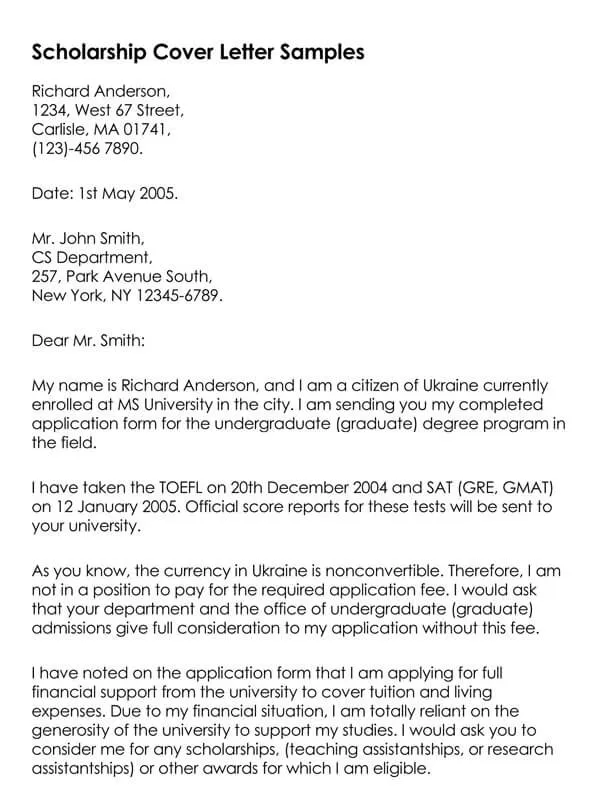
Set standard margins of 1 inch on all sides of the letter. Use single spacing for the body of the letter and double spacing between paragraphs. This format enhances readability and gives the document a clean, organized look. Consistent margins and spacing make your letter appear neat and professional. Ensure the document has ample white space, which helps the reader process the information without feeling overwhelmed. Proper spacing makes your content more accessible and visually pleasing.
Proofreading and Editing
Thoroughly proofread and edit your cover letter for any grammatical errors, spelling mistakes, or typos. Ask a friend, family member, or career advisor to review your letter for clarity and accuracy. Ensure that your writing style is clear, concise, and free of jargon. Proofreading is crucial to ensure your letter is polished and professional. Make sure that the language and tone suit the scholarship provider. A well-edited letter is a sign of your attention to detail and commitment to excellence.
Scholarship Cover Letter Examples
Examining scholarship cover letter examples can provide valuable guidance for writing your own. Study different examples to understand various writing styles and structures. Adapt these examples to your circumstances, but make sure you personalize each one. Reviewing successful examples can help you learn what works well and what to avoid. Using models can offer a solid understanding of how to present your strengths and achieve the desired impact on the scholarship committee.
Example 1 Focused on Academic Excellence
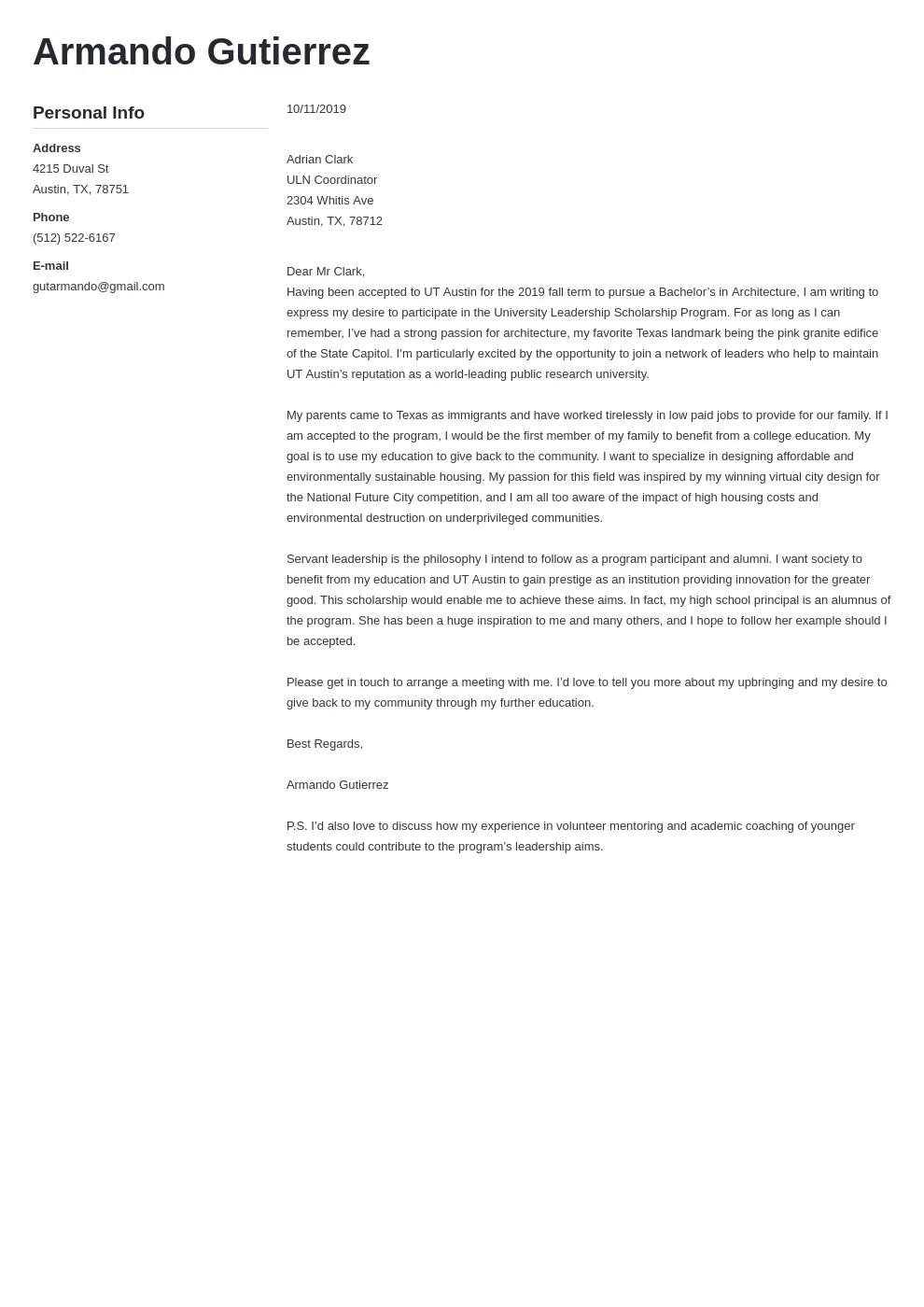
This example emphasizes a strong academic record and related achievements. The applicant highlights their GPA, honors, and involvement in academic clubs and competitions. It explains how these achievements align with the scholarship’s goals. Use this as a model for highlighting your academic success, academic skills, and enthusiasm for learning. The example should show a well-rounded academic experience and a clear vision for future studies. This approach is helpful for students whose academic achievements are their strongest asset.
Example 2 Highlighting Leadership Skills
This example features an applicant who emphasizes their leadership roles, volunteer work, and community engagement. It demonstrates the applicant’s ability to lead, collaborate, and make a positive impact. If you have strong leadership skills and substantial community involvement, this model will be very helpful. This approach is ideal for demonstrating how you have actively shaped your environment, taken responsibility, and worked to inspire others. Highlight how your leadership has prepared you for the scholarship.
Example 3 Emphasizing Financial Need
This example focuses on the applicant’s financial needs and how the scholarship would help them pursue their educational goals. The narrative clarifies the applicant’s commitment to education and their resolve in facing financial challenges. Be sure to present your situation with sincerity and a strong desire to succeed. This example provides a framework for showcasing your personal circumstances, demonstrating your grit and your goals. If financial assistance is critical to your success, this model is crucial.
Common Mistakes to Avoid
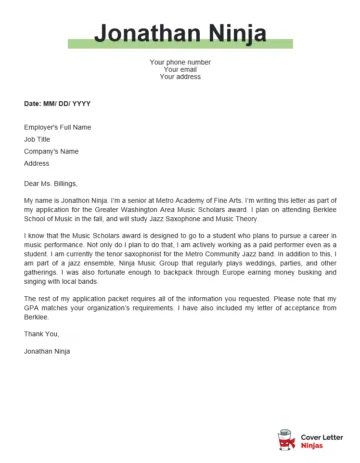
Avoiding common mistakes can help ensure that your scholarship cover letter is polished and effective. By being aware of potential pitfalls, you can improve your application and increase your chances of success. Some of the most common errors can undermine even a well-qualified applicant.
Ignoring Instructions
Carefully read and follow all instructions provided by the scholarship provider. Failing to do so demonstrates a lack of attention to detail and can lead to disqualification. Ensure your letter meets the specific requirements, such as word count, format, and content. Make sure you have addressed all the necessary points and included all the required documents. The guidelines are designed to evaluate applicants fairly; non-compliance suggests that you are not taking the application seriously.
Using Generic Letters
Avoid using a generic cover letter that is not tailored to the specific scholarship. Customize your letter to highlight the scholarship’s mission and your relevant qualifications. Generic letters show a lack of effort and can appear insincere. Research the scholarship and tailor your letter to address its unique requirements and values. Personalize the letter to show your genuine interest in the specific scholarship and how you align with its goals. Tailoring the letter is a critical way to impress the selection committee.
Poor Grammar and Spelling
Ensure your letter is free of grammatical errors and spelling mistakes. Proofread your work carefully and ask someone else to review it. Errors can damage your credibility and give the impression that you lack attention to detail. Poor grammar and spelling reflect badly on your writing skills and your commitment to the application. Proofreading is an essential step. Consider this part of your letter an indication of your abilities and focus.
Tips for Writing an Effective Scholarship Cover Letter
Writing an effective scholarship cover letter involves several key strategies. Use these tips to create a compelling and persuasive letter that showcases your qualifications and increases your chances of success. Apply these tips to ensure that your cover letter stands out.
Begin by researching the scholarship and its mission to understand its goals. Tailor your letter to the specific requirements. Highlight your unique qualifications. Tell a story that helps you stand out from other applicants. Proofread and edit your letter carefully. These steps should enhance the quality of your application.
